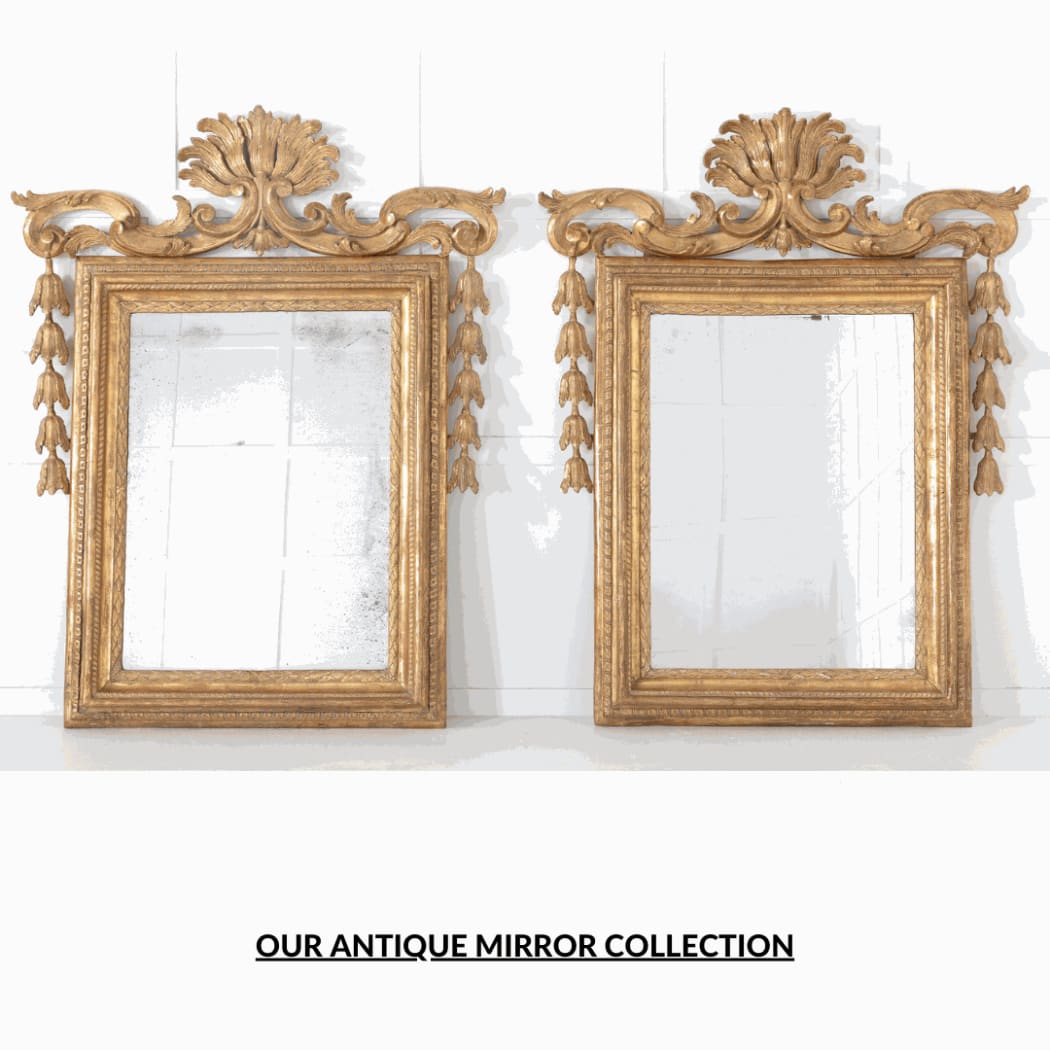
Antique mirrors are not just functional items for checking one's appearance; they also add a touch of timeless elegance to any room. Whether you are a collector, interior designer, or simply looking to add some vintage charm to your home, antique mirrors are a fascinating and beautiful addition to any space. In this blog, we will explore the history and allure of antique mirrors, and how you can incorporate them into your home décor.
History of Antique Mirrors
Mirrors have been used for thousands of years, with the earliest examples being made of polished obsidian or other reflective materials. In ancient times, mirrors were considered luxury items, and only the wealthy could afford them. In the 16th century, Venice became known for its production of high-quality mirrors, and the demand for them grew across Europe.
Antique mirrors are those that were made before the 20th century, and they come in a wide range of styles, from ornate Baroque designs to simple, understated Art Deco pieces. Some of the most sought-after antique mirrors are those made during the Rococo and Baroque periods, which are known for their elaborate frames and intricate details.
One of the most distinctive features of antique mirrors is their imperfections. Unlike modern mirrors, which are made using automated processes, antique mirrors were made by hand, and as a result, they often have slight imperfections, such as uneven surfaces or small bubbles in the glass. These imperfections are part of what makes antique mirrors so unique and valuable.
Incorporating Antique Mirrors into Your Home Décor
If you are considering incorporating antique mirrors into your home décor, there are several ways to do so. Here are some ideas to get you started:
- Hang a large antique mirror above your fireplace. This will not only create a focal point in the room but will also help to reflect light and make the space feel larger.
- Use an antique mirror as a statement piece in your entryway. This will create a grand entrance and set the tone for the rest of your home.
- Group several small antique mirrors together to create a gallery wall. This is a great way to showcase a collection of mirrors and add visual interest to a room.
- Place an antique mirror on a table or dresser and use it to display other vintage items, such as perfume bottles or jewellery boxes.
- Use an antique mirror as a backsplash in your kitchen or bathroom. This will add a touch of elegance and sophistication to the space.
- When selecting an antique mirror, it is important to choose one that fits your personal style and complements your existing décor. Antique mirrors come in a wide range of styles, sizes, and shapes, so there is sure to be one that will work for you.
Why not read our ‘3 Steps To Build Working Relationships With Interior Designers’ blog to see how we work with interior designers.
Caring for Antique Mirrors
Antique mirrors require special care to keep them looking their best. Here are some tips for caring for your antique mirror:
- Avoid harsh cleaning products. Instead, use a soft, damp cloth to gently clean the surface of the mirror.
- Do not hang your antique mirror in direct sunlight, as this can cause the silver backing to deteriorate.
- Keep your antique mirror away from heat sources, such as radiators or fireplaces, as this can cause the glass to crack.
- If your antique mirror is showing signs of deterioration, such as black spots or flaking, it is best to have it professionally restored.
In conclusion, antique mirrors are not only functional items but also works of art that add character and beauty to any space. Whether you are a collector or simply looking to add some vintage charm to your home, an antique mirror is a wonderful investment that you can enjoy for years to come.
At Lee Wright Antiques we pride ourselves on the quality of our resoration and craftmenships, across our ranges. Take a look for yourself on our 'Antiques Craftmenships' Page.